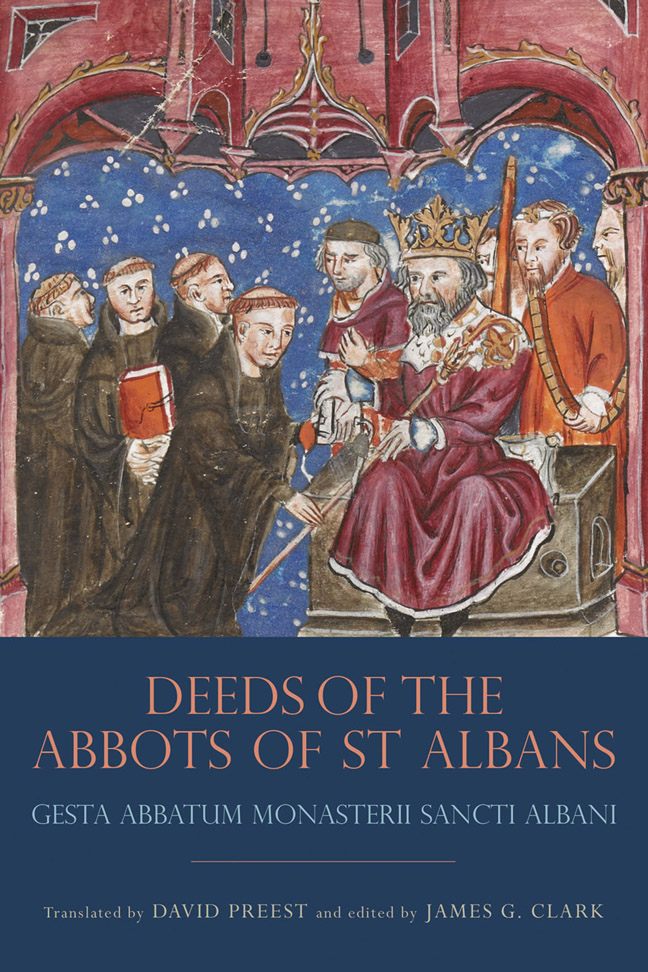Book contents
- Frontmatter
- Contents
- List of Illustrations
- Acknowledgements
- List of Abbreviations
- Introduction
- The Translation and its Sources
- The Deeds of the Abbots of St Albans
- Appendix A Thirteenth-Century Précis of the Deeds of the Abbots of St Albans: British Library, MS Cotton Vitellius a XX
- Bibliography
- Index
23 - John De Hertford
Published online by Cambridge University Press: 17 February 2024
- Frontmatter
- Contents
- List of Illustrations
- Acknowledgements
- List of Abbreviations
- Introduction
- The Translation and its Sources
- The Deeds of the Abbots of St Albans
- Appendix A Thirteenth-Century Précis of the Deeds of the Abbots of St Albans: British Library, MS Cotton Vitellius a XX
- Bibliography
- Index
Summary
The process of election and confirmation, with various intermediary deeds described below, the first for the creation of an abbot of St Albans after the Lateran Council
As was said above, Abbot William died at the ninth hour on the day of the Blessed Matthias the apostle, after he had vigorously ruled the church of the Blessed Alban and strongly sustained its monastic order for twenty years and nearly three months, and was buried on 27 February in the chapter house. On the same day that he was buried three brothers were sent to the lord king to secure freer custody of the abbey, and to get from him permission to make a free choice of abbot in the usual way, so that the Lord's flock should not suffer the absence of an abbot for long.
As all the monks had been daily processing barefooted before the shrine of the martyr while singing the seven penitential psalms to get the martyr's help, while also fervently and devoutly saying on their knees the proper collects for this, it was with the help of the blessed martyr that the three monks obtained from the lord king both the permission to make an election and the favour of keeping their own house totally in their own hands for a whole year from the day of Abbot William's death, apart from the escheats and the appointments to churches. But 300 marks were counted out secretly for this concession. It happened that the church of St Julian fell vacant during this year, and it was given to Master Nicholas on the royal authority.
When the three brothers brought back this permission to the monastery from the king's court, the monks rejoiced that they were not to be ensnared in the nets of the king's minions. For there was a knight called Adam FitzWilliam, the lord of Hatfield (which is not far distant from Sandridge). He had plenty of money but he wanted still more, and at the time he was the escheator of the lord king.
- Type
- Chapter
- Information
- The Deeds of the Abbots of St Albans<i>Gesta Abbatum Monasterii Sancti Albani</i>, pp. 433 - 506Publisher: Boydell & BrewerPrint publication year: 2019

